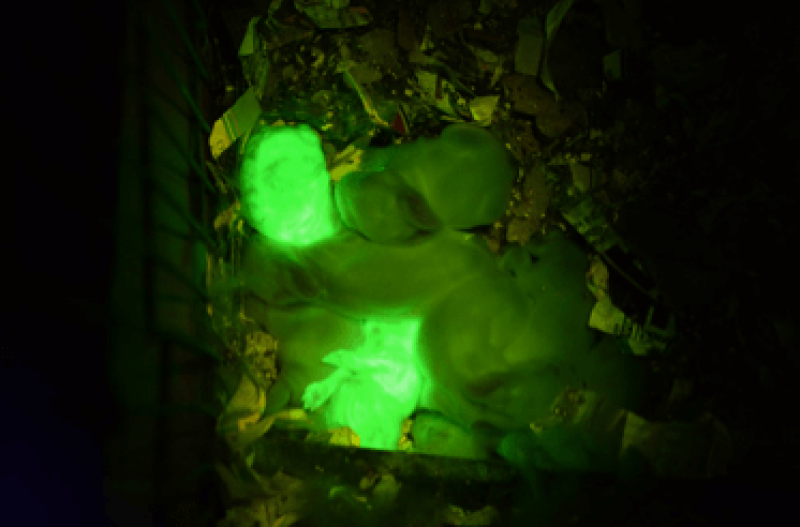The glowing transgenic bunnies born in early August are expected to live long, productive rabbit lives. They are not evil; they just glow bright green under a black light. They do not portend apocalypse, but rather a potential for great good.
The idea is that scientists inject genetic material into rabbit embryos and it becomes a part of their genetic makeup. That green glow indicates that the technique works.
In 2011, the same technique created glowing kittens that were also, more importantly, resistant to feline immunodeficiency virus (FIV). Eventually, researchers hope, this technique can be used to create engineered animals capable of producing biological pharmaceutical products.
Read the full, original story here: Glowing Bunnies: Why They Matter
Additional Resources:
- “Glow in the Dark Rabbits Could Fight Disease, Are Super Cute,” ABC News
At the end of this ABC News article, the author notes that transgenic studies, while eye-catching, haven’t led to many new medicines or technologies. And, the author notes, maybe the camera-friendly factor is intentional:
There’s no denying that glowing animals get attention. So underfunded scientists can use the “aww” factor in getting media attention that can help their projects flourish. This is even more relevant when you see how many transgenic companies have been shutting down its businesses.
- “UH’s Neon Rabbits, Pigs and Sheep Fetuses Spark Ethics Debate,” Civil Beat
Naturally, media coverage of the work has fanned the embers of animal rights activist concerns. - “Glowing Animals: Beasts Shining for Science,” National Geographic
Learn about previous studies that have used fluorescent indicators and see what researchers learned from each experiment. - Transgenic Animals: Their Benefits To Human Welfare,” actionbioscience.org
The creation of transgenic animals has applications in agriculture, medicine, and industry. Learn more about the technology and the animals it allows researchers to create.































